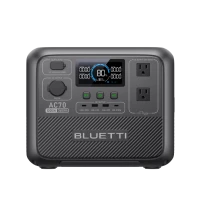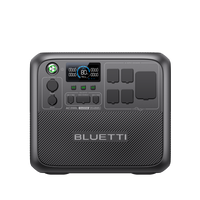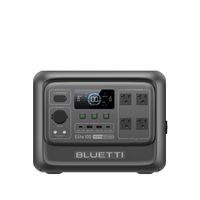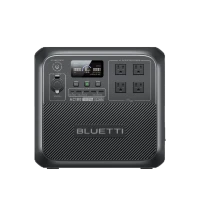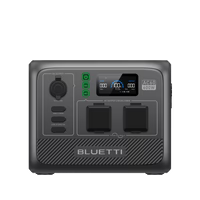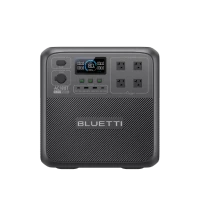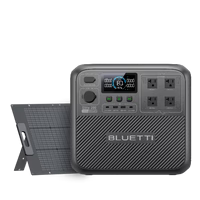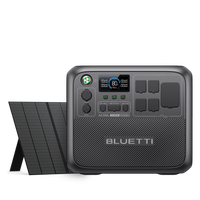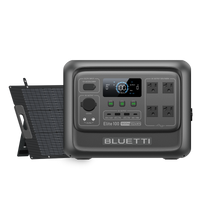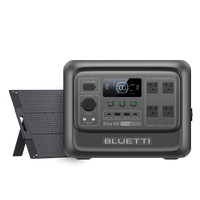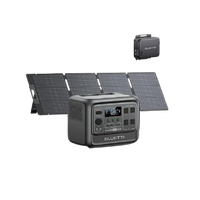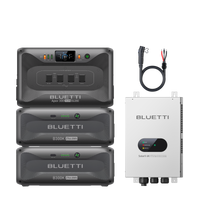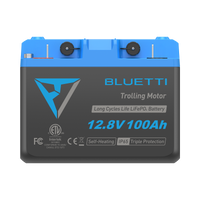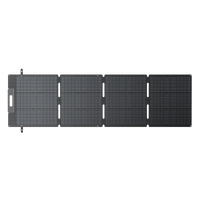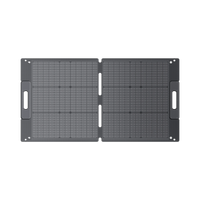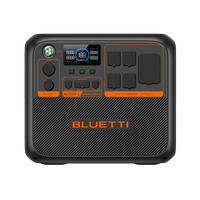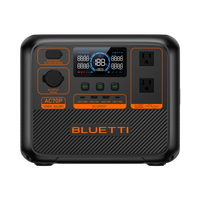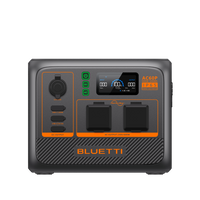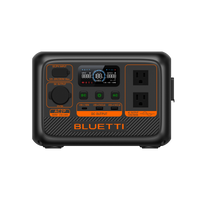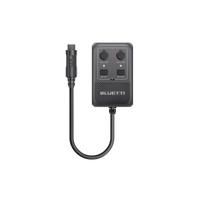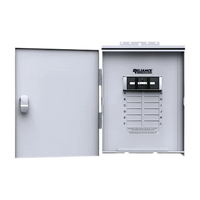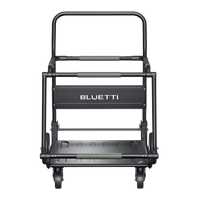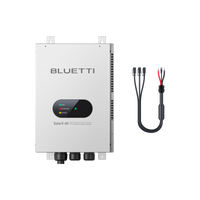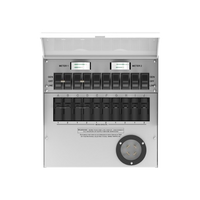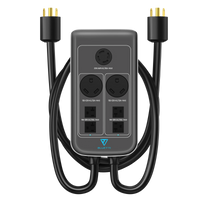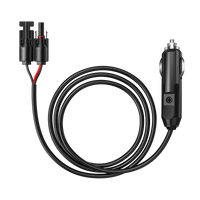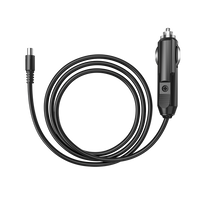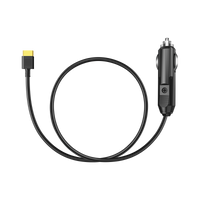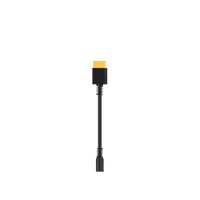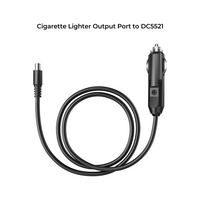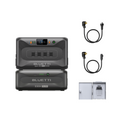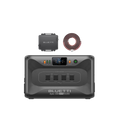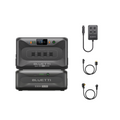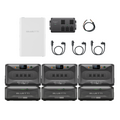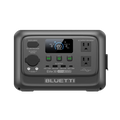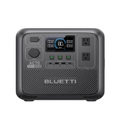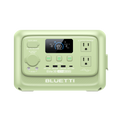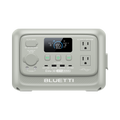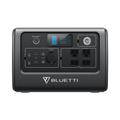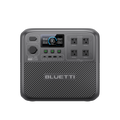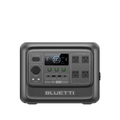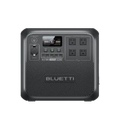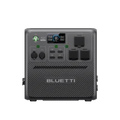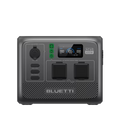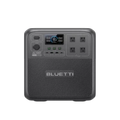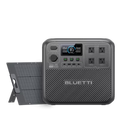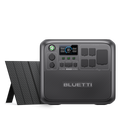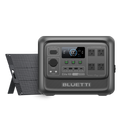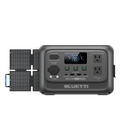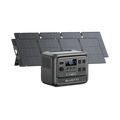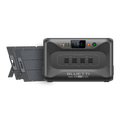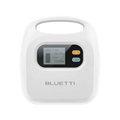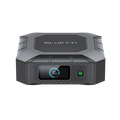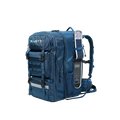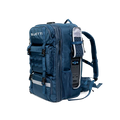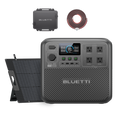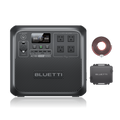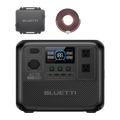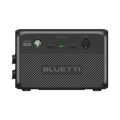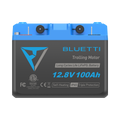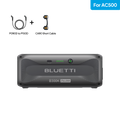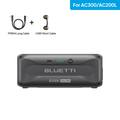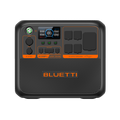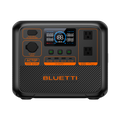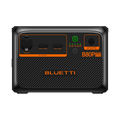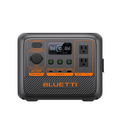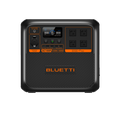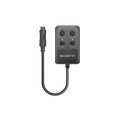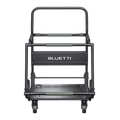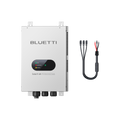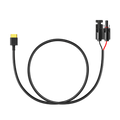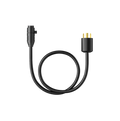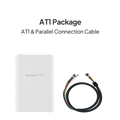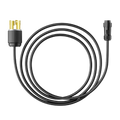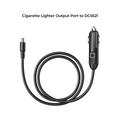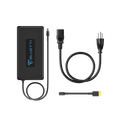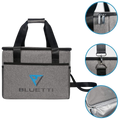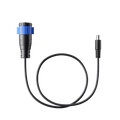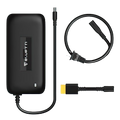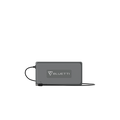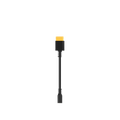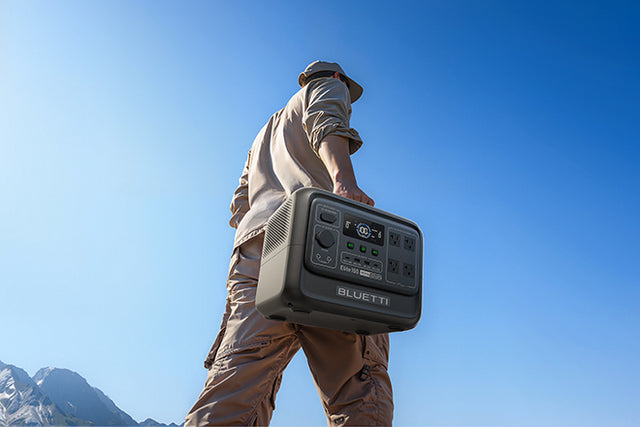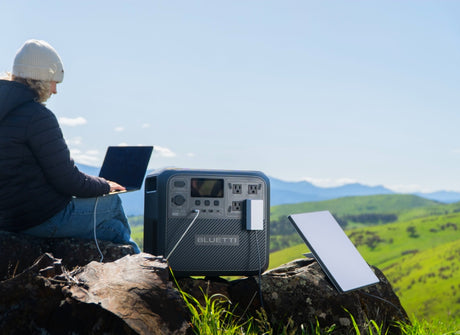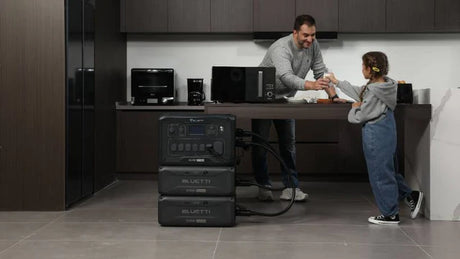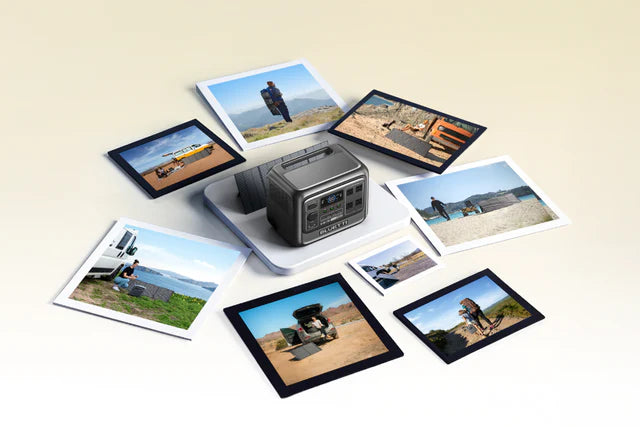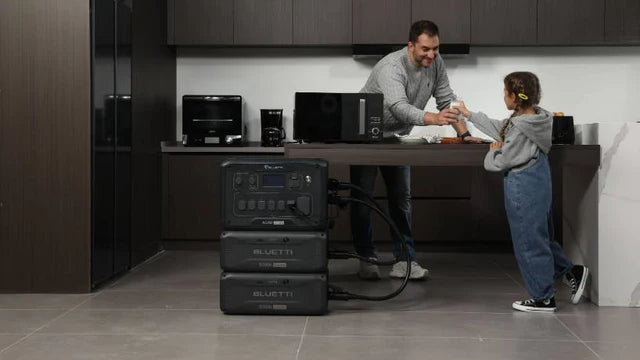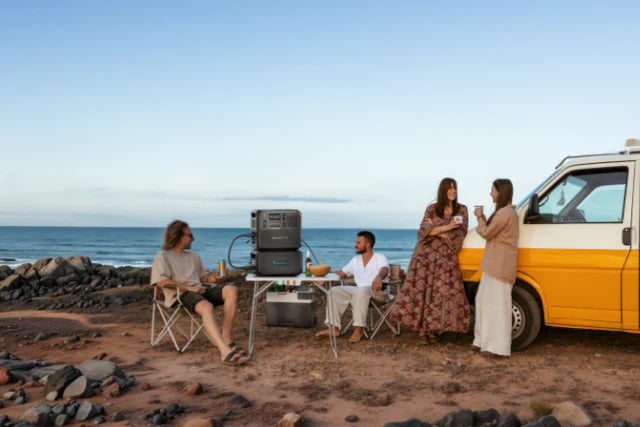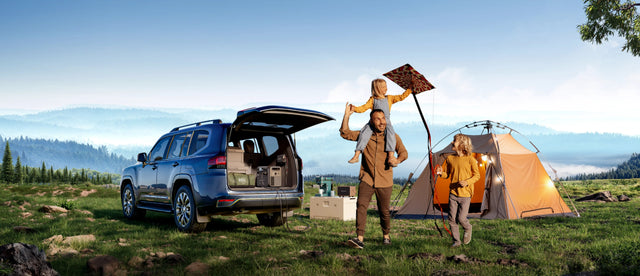When you think of emergencies and evacuations, being prepared with the right supplies to grab and go can make a difference in safety versus exposure. A go bag is a grab-and-go survival kit that will sustain you when you need to evacuate, quickly. In this guide, we go over everything you need to know about go bag essentials — what to directly pack into the kit, how to tailor it for your personal situation and maintenance routines to keep it always ready.
What Is a Go Bag, and Why You Need It
A go bag is an already-packed backpack or duffle packed with the things you would need to survive for a day or two (or three) if you had to pick up and immediately evacuate. The goal is to support your fundamental needs of food, water, first aid, shelter, communication and key documents for 72 hours while on the move.
Basic Survival Items For Your Go Bag
Your go bag essentials start by encompassing the basic survival categories of water, food, shelter, light / fire, with first aid supplies and communication/ tools. Here's a detailed breakdown:
|
Item |
Quantity |
Purpose |
|
Water |
1 litre per person per day (minimum) |
Hydration + plus water purification tools |
|
Food |
Nonperishable snacks (energy bars, dried fruit) |
Lightweight energy to sustain |
|
Shelter & Warmth |
Emergency blanket, compact tarp, poncho |
Protection from elements |
|
Lighting & Power |
Flashlight, head lamp, extra batteries, solar/hand-crank charger |
Visibility and powering devices |
|
First Aid |
Basic kit plus prescription medications |
Medical emergencies and ongoing needs |
|
Communication & Navigation |
Whistle, local maps, extra phone cables, spare SIM, power bank |
Signals and navigation assistance |
|
Multi-tool Essentials |
Knife, multi-tool, duct tape, paracord |
Universal applications for fixing and survival |
Water
The most important item in a go bag essentials kit is water, no question. In short, if you are evacuating for a few days it’s best to bring 1 litre of water per person per day. But it’s not practical to carry large amounts of water for an emergency kit. Rather, focus on portable water purification systems such as purification tablets or water filters. These devices will enable you to draw water from natural bodies of water freeing you up to stay alive for longer without being able carry a heavy bundle along with you.
Food
For food, the objective with your go bag essentials is to choose low-weight, high-calorie options that are also relatively easy to eat. Protein bars, nuts, dried fruits or freeze-dried meals. Whatever you choose has to give them essential energy without having to be cooked or prepared. These foods are both light-weight and feature a space-efficient design, allowing for easy storage in your go bag essentials.
Picking the right food will guarantee that you won’t spend valuable time and energy attempting to get some delicious meals ready during a crisis. Ready-made pre-packaged food ensures that you are self-reliant and have enough in your go bag essentials to sustain for 72 hours or more, depending upon your requirements. Also, the secret lies in choosing foods that are rich in nutrients and add a lot of calories not to use behind your energy but also to help you stay focused and strong during stressful times or activities.
Shelter and Warmth
When disaster strikes, shelter is a must-have, and that’s why it’s one of the first three things you’ll see in our go bag essentials list. They are very thin and light, easy to stash in the car or fold into a bag. Blankets are meant to keep in the heat emanated from your body, and they're excellent for emergency situations. Also, a lightweight poncho will provide cover from wind and rain, helping to keep you dry so that you can avoid hypothermia in wet conditions.
Lighting and Power
Look for go bag essentials with lighting and power capabilities, which are very important items if you’re stuck in the dark or under low visibility scenarios. An LED flashlight or headlamp that’s dependable is one of those things as well. These devices emit bright, directional light so you can read maps and hike trails in darkness to either set up camp or call for help. Be sure to take extra batteries so your flashlight works for you. A power failure can be even more threatening in an emergency.
Chargers let you provide power for your phone, GPS or other essential electronics when you are out and about without the need for disposable batteries. Another idea is a portable power bank so that you have back-up power to maintain lines of communication and stay connected during an evacuation. Whether you’re at home, on the road, in the woods, or even stranded in a boat, this combination of lighting and power tools is perfect for any kind of issue you run into.
First Aid Kit

Your go bag must haves should also include a simple first aid kit to handle any injuries and medical needs. Bandages, antiseptic wipes, gauze and adhesive tape for cuts and scrapes can help in a more serious wound situation. You also need painkillers such as ibuprofen or acetaminophen to reduce the pain in an emergency. Apart from essentials, make sure you unpack your own medicine as well as a print out of prescriptions so that it can be refilled or referred to by the doctor.
Beyond essential basics, you’ll want a first aid kit packed within your go bag essentials and suited to your personal health needs. You could also want to pack items such as allergy medicine, a thermometer or perhaps even a small splint for fractures. Prompt attention to medical needs can be a lifesaver in an emergency. Make sure your kit is fully-stocked and that you’re replacing any expired medications often so your go bag essentials are always current and ready to rock.
Communication and Navigation
Communication and navigation items are go bag essentials, particularly when you’re off-grid. A whistle is the most important item you shouldn't leave behind. It can help you call for help if you are in an emergency situation. For pennies, it can help slice through aural clutter in a group or demand attention when you’re alone. And along with the whistle, take some local paper maps as part of your go bag essentials. Digital devices can die, and physical maps are dependable utilities that ensure you know where to go.
Staying connected is a priority in emergency situations, so have extra charging cords and a backup source of power with you, such as a portable power bank. If you’re going international, another thing that’s highly advisable is to get a backup SIM. It makes sure that you can call for help or reach your friends and family even when your main SIM card is out of service, or when you are in a place with no reception. These communication and navigation tools are must haves for go bag essentials that will mean you can keep in the loop, stay connected, and find your way to safety.
Multi-tool Essentials
When preparing your go bag essentials, you can never forget a reliable multi-tool, good for practicality in survival and handyman work on the go. One good multi-tool can help you do a variety of tasks, from cutting ropes and opening cans to making simple repairs. In a bad situation, you are going to need a knife or multi-tool to help build a shelter, kill an animal for food and possibly even self-defense.
Along with a multi-tool, one of the go bag essentials is duct tape. You can use it to repair a part of a damaged tool, stop leaks, or make some form of housing. You can use paracord. It’s lightweight but very strong to tie things together, build shelter or secure things. These multi tool essentials offer you the must have versatility and flexibility of every survival tool in your go bag.
Documents You Need to Carry

Your go bag essentials list should also incorporate must-have documents and information such as identification, medical records, and emergency plans. Here’s what to include:
- Photocopy of your personal identification – Passport, driver’s licence or student I.D.
- Evidence of address and medical/insurance papers
- Lists of contacts to establish where the detainees' relatives and friends live, as well as local political representatives
- Evacuation instructions or written information on meeting points and routes
- Details of local embassies - essential for overseas visitors
Keep the documents in a waterproof bag or save them digitally with encrypted cloud storage or USB drives to minimize risk of loss.
Personalizing Your Go Bag for Specific Needs
Everyone and every family is different, so their needs will vary when it comes to items in your go bag essentials.
|
Custom Add-Ons by User Type |
Group |
Additional Items |
Why They Matter |
|
Children & Infants |
Parents with young children |
Formula, diapers, baby comfort items |
Comfort and nourishment for children |
|
Medical Needs for Seniors |
Elderly, medically depndent |
Additional prescriptions, hearing aid batteries, mobility supplies |
Emergency Health Comfort and Support |
|
Pets |
Pet owners |
Walgreens Pets: Food, leash, medications, ID tags and carrier |
Ensure pet safety and comfort |
|
Travelers/Expats |
International travelers |
Global SIM, power adapter, embassy cards |
Communication and assistance in other (foreign) countries |
Children & Infants
When packing a go bag for kids and babies, you need to think about what little ones specifically will need. For the babies, don't forget the formula and diapers. Babies thrive on routine, and having formula on hand means you can stick to at least some of their schedule even while evacuating. Obviously, you are going to need an ample supply of diapers to keep your baby dry and clean.
Baby wipes, baby carriers, and an extra pair of clothes can also offer emotional support during tense times. Carry additional baby food or snacks for older children and any specific food your child needs along with formula. These emergency go bag essentials will help you be prepared for your child’s particular needs during an emergency.
Medical Needs & Seniors
For anyone with medical needs, or who is caring for an older loved one, customize your go bag essentials so you have what’s needed when it comes to their health. Supplementary medicines are essential to allow people living with chronic conditions or maintaining their health to continue managing those conditions. Not only prescribed drugs, but any over-the-counter medicine or supplements that you take on a usual basis should be listed. Be sure to have a list of prescriptions, and dosage amounts, handy for quick reference, in the event you require medical assistance during the evacuation.
Seniors might not only want or need medications but also hearing aid batteries, mobility aids like a cane or walker and comfort items like extra blankets. If the seniors you are responsible for have a known medical condition – like diabetes, heart disease, etc – bring the necessary supplies or equipment. For example glucose tablets, a blood pressure apparatus or any special device they may require. Customizing your go bag essentials for medical and elderly needs means everyone in your household will have the tools to address their health during an emergency.
Pets
Don’t forget to place your pets’ needs first when assembling you go bag essentials. All in the family Pets are part of the family, and in an emergency situation they deserve care as much as you or your child. Bring food for your pet and be aware of any special dietary requirements they have. And don’t forget bowls for food and water. Don’t forget any medications your pet may require as well as their ID tags, if you get separated during the evacuation.
A carrier will also offer a safety spot for your pet to sleep while you are busy. Pets are just as likely to get stressed or anxious in emergency situations, so bring along familiar comfort items like a favourite toy or blanket to help reduce their stress levels. Tailoring your go bag essentials with these pet-related items is simple and will ensure the safety, health and comfort of our four legged best friends in the event of an evacuation.
Travelers/Expats
For travelers and expats, it’s important to tailor your go bag essentials for the specific needs of an international scenario. An international SIM card is one of the most important things to pack. You can continue reaching out to emergency services, family and friends, as well as the embassies of your nation, even if you cannot use a local SIM card or are in another country. A power adapter is also essential for charging your devices, especially when you’re in a country that uses different plug types.
An Embassy contact card should also be there to make sure you can access local embassies as fast as you can if out of the country. And last but not least, a few extra changes of clothes (underwear and socks included!) packs down to be nothing at all in your bag, but they can also make the world of a difference if you’re stuck in a travel emergency or evacuation situation. Customizing your go bag essentials for travel and expat life is a way of being able to handle anything, anywhere in the world.
Reliable Source of Power
A Small Portable Power Station

Great for a dependable, space-saving power store to back up your must-have items in your go bag essentials, the BLUETTI Elite 30 V2 is a solid option. Charge up your gear when you need it with this portable power station, with a 204.8Wh capacity and 300W output. It has various output ports, which include two AC outlets, USB-A and USB-C sockets, enabling it to charge phones, laptops and other small electronics.
The BLUETTI ELite 30 V2 power station also provides a fast charge time of 1.4 hours on AC, which comes handy if you just want to power up in emergencies and be back on the go! It has a life span of 3,500 cycles and 5-year warranty, providing a longer-lasting companion. Better yet, at 7.9 lbs, it’s lightweight and won’t drag down your go bag necessities. With the versatility to support live power feeding, this is a must-have for camping, travel or even when you are evacuating and needing to keep connected or powered up.
Lightweight vs. Full-Sized Go Bag (Go For What You Need)
The ideal go bag essentials will vary depending on how you live, your intended use and how much you can carry.
|
Type |
Contents |
Typical Use Case |
|
Minimalist Go Bag |
Water, energy bars, phone charger and documents |
Ultra portable for brief evacuations or day trips |
|
Standard Go Bag |
Must-haves for survival plus hygiene, clothing, & medications. |
Home evacuation or moderate travel |
|
Expandable Kit |
More regional gear, rainwear, larger food/water supplies |
Long-term sheltering or remote locations |
Minimalistic bags are ultra-light packable packs for immediate needs, whereas regular kits strike a balance between weight and contents needed to survive for 72 hours. Customizable kits are available for special situations or equipment needed over longer periods of time.
Maintaining and Storing a Go Bag

A well-stocked go bag is only useful if it’s updated and easy to get to. Use these tips to keep your bag packed:
- Keep the bag in a place you always know where to find it like your hall closet, under your car seat or dorm locker.
- Perform a complete inspection and update at least every six months to change out outdated food, medicines and batteries.
- Match clothing and gear to the season for both cold or hot weather.
- Use a dual storage technique by hanging a complete set at home and compact ones at your job, in the car, luggage or boat.
- Keep your go bag essentials next to an exit door so you can grab it easily if an emergency strikes.
Travel and Evacuation Scenarios for Go Bag Essentials

If you are an international student, frequent traveller, or expatriate – your go bag essentials need to be different:
Tips for international students and frequent travelers
For international students or jet setters, having a go bag essentials list that you have adapted to travel scenarios is even more important. Emergency contacts Pack important documents, including passport, visa and student ID with emergency contact numbers. Don’t overlook a power bank, an international SIM card and any medication required. Having a small, ready-to-grab go bag makes it easy to be prepared for an emergency while traveling or on the road.
Airport Carry-Ons vs Survival Essentials
When preparing a go bag for air travel, remember to consider restrictions on airport carry-ons. Liquids will need to be restricted to containers of 100 ml or less, while there may also be a need for sharp items to go in checked baggage. But some vital tools that could save your life, including energy bars and a small flashlight or multitool, can usually be stowed in the carry-on. Counterbalance survival needs with the real limits of airline and security.
Embassy vs Local Support Cards
It is also important to have the details of embassies and emergency local assistance cards for international travelers. Almost imminent to pack for a go bag should be the embassy’s number, address and emergency protocols. Adding in a couple key phrases of the local language — such as “Help” or “Emergency” — can come in handy if you do need to communicate but there’s a language barrier. That way you can get assistance when the worst emergency happens and the time to leave comes.
Kit Size Options
When traveling overseas by air or land, make sure to customized your go bag essentials to fit the type of travel. Air travel mandates packing small, portable goodies that fit inside carry-ons Treks may require some heavy-duty survival kit building. You might also want to pack lightweight multi-use items, and always confirm any regional requirements or restrictions for the emergency go bag essentials you plan to bring so that you can be fully prepared for international travel and emergencies.
FAQs
What are the go bag essentials items?
Water, food, shelter (space blanket, poncho), light (flashlight/headlamp), first aid kit, signal devices (whistle/maps), multi-tool (knife/duct tape) and personal items including ID and medications.
How much does a go bag weigh?
An average go-bag is 10-15lbs, but it can vary based on the size and specific items inside.
What if I’m traveling abroad?
International SIM card, power adapter, embassy information, small outfit change and travel meds.
How often should I update my go bag?
Check and refresh your go bag every 6 months to replace expired items and consider any seasonal needs.







